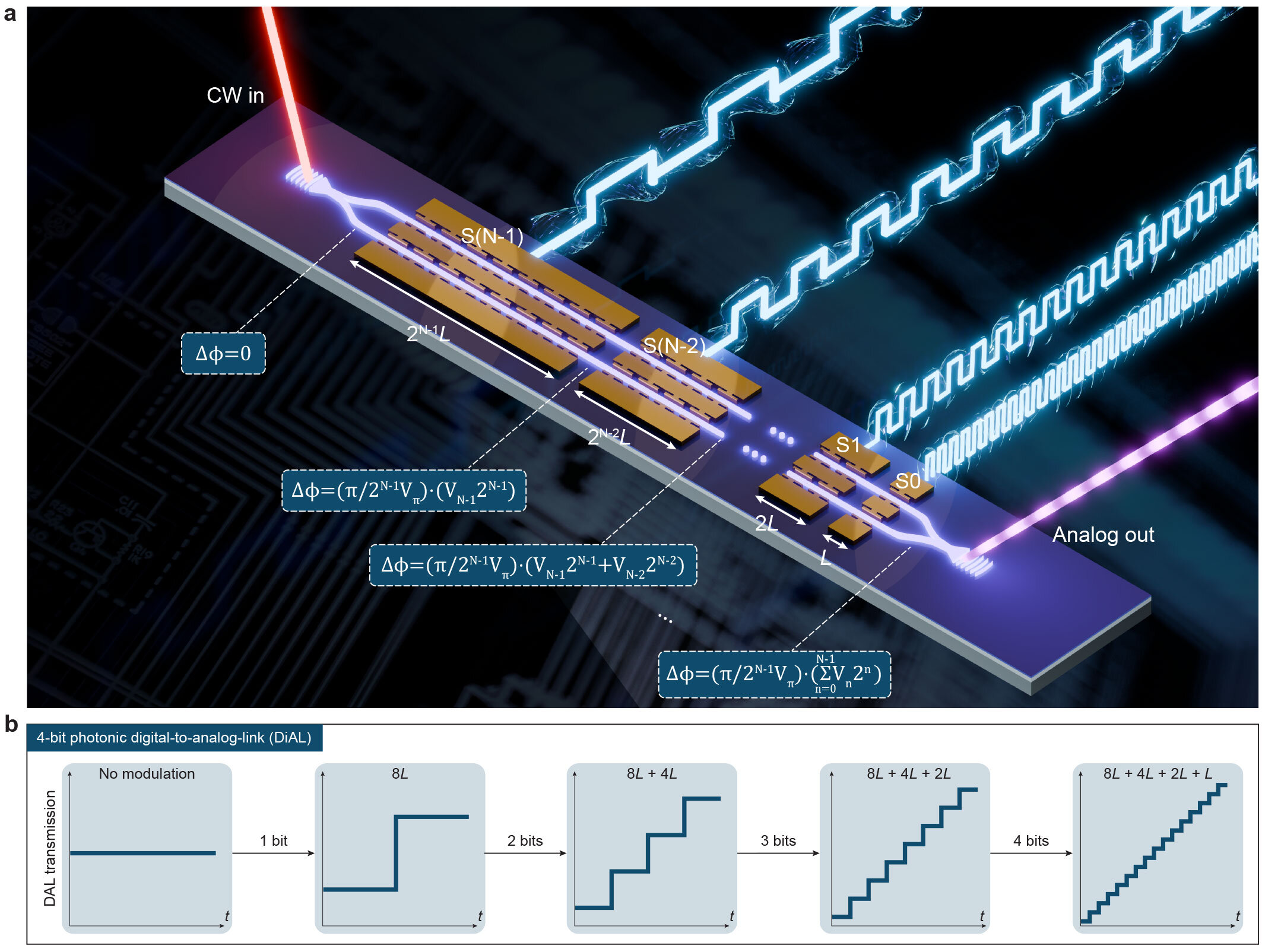Key Takeaways
- Researchers at Harvard have developed a new device that converts digital electronic signals to analog light signals using lithium niobate.
- This device operates at speeds up to 186 gigabits per second, potentially revolutionizing photonic computing and enabling efficient data processing.
- The technology may streamline data communication and enhance microwave photonics applications, addressing current limitations in electronic signal conversion.
Innovative Advancement in Photonic Computing
Researchers at the Harvard John A. Paulson School of Engineering and Applied Sciences have made a significant breakthrough that addresses a primary obstacle in photonic computing and signal processing. They have created a device capable of converting digital electronic signals into analog light signals in a single step, potentially replacing energy-intensive digital-to-analog converters currently used in high-speed data networks.
The new device is based on lithium niobate, a widely used material in optoelectronics. Marko Lončar, the senior author of the study, emphasizes the need for seamless integration between optical technologies and electronic systems. Currently, the conversion process involves a combination of electronic digital-to-analog converters and electro-optic modulators, making it complex and energy-consuming. “This workflow can offset the advantages of speed and efficiency that photonics promises,” says Yunxiang Song, a co-first author and graduate student at Lončar’s lab.
The newly developed device has the potential to eliminate this bottleneck. It leverages the advantageous electro-optic properties of thin-film lithium niobate to achieve data conversion at speeds of up to 186 gigabits per second, significantly faster than typical home internet speeds. This rapid conversion can transform how data is processed in modern computing and AI technologies.
In addition to enhancing data communication, the device’s capabilities extend to microwave photonics. By integrating with photodetection technologies, it can also facilitate the conversion of optical signals into radio frequency signals, which is vital for applications in wireless communication and radar technologies.
To validate the performance of their device, the research team tested it on the MNIST dataset, renowned for benchmarking photonic computing systems. The fabrication process of the device was conducted via a lithium niobate foundry process, mirrored after methods used in silicon chip production. This compatibility suggests that lithium niobate devices can be mass-produced at a lower cost, much like modern silicon chips.
The implications of this innovation are significant, with potential applications in AI and various fields relying on efficient data transfer. As stated by Yaowen Hu, co-first author and former postdoc at Harvard, this device could resolve existing connectivity issues in computing and advance optical computing approaches that utilize light instead of electrons. The future of computing may increasingly hinge on such technologies, paving the way for more efficient and integrated systems in data processing and communication.
The content above is a summary. For more details, see the source article.















